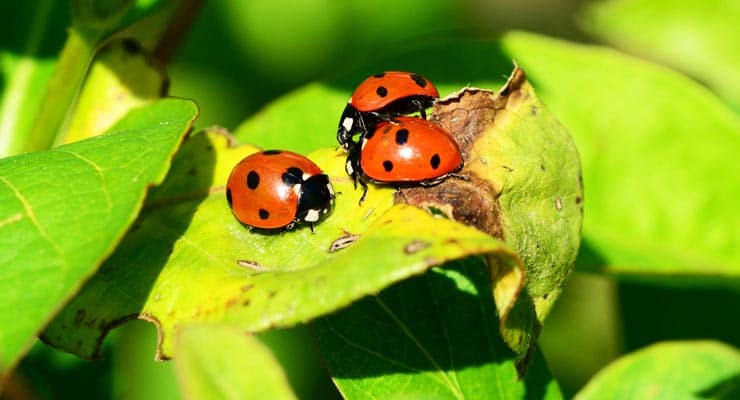STD-riddled ladybirds invading British shores? It’s clickbait
When you see headlines like this…
Experts recommend SEALING your windows and doors.
….you could be forgiven for picturing a scene much like that you’d expect to see in a B-movie monster flick. Panic. Boarded up windows. Terrifying newspaper headlines drifting down deserted streets.
Tabloid trash journalism works best by keeping readers in a state of perpetual panic or fear. That’s why, if the Daily Express is to be believed, we’re always heading into either the hottest heatwave on record or the coldest snowstorm. They don’t print headlines like “Relatively mild summer expected” because that doesn’t sell copy, nor does it attract clicks.
Now we have STD “zombie” ladybirds invading our British shores from foreign lands. Infecting us with their exotic but deadly diseases. Panic. Seal your houses. But first, and more importantly, buy more of our newspapers.
Sponsored Content. Continued below...
Facts are usually more boring and tedious. But we are a fact-checking website, and in that spirit, what exactly is going on with the ladybird community?
Well, nothing particularly different than any other year really. Yes, we’re seeing more ladybirds at the moment, especially indoors, since October is the month when ladybirds search for places to spend their dormant period over the winter, known as “overwintering”. It happens every year. It’s likely that there will be more ladybirds than average because of the especially mild weather in the UK during 2018. As such that means it’s likely that more people are noticing them.
As for the STD-infected invasion, this is referring to the ladybird colloquially known as the Harlequin Ladybird, or Harmonia axyridis. But reports of an invasion are somewhat dated, since this particular bug has been in Britain since 2004, 14 years ago.
Yes, this species of bug had originally arrived from North America and Asia, and yes, it’s particularly invasive. As for the alarmist “STI-riddled” headlines, this particular Ladybird can have a fungal infection called Laboulbeniales. That’s not a fatal disease, but could potentially affect the number of eggs a female can produce throughout her lifespan. Needless to say, it doesn’t affect humans whatsoever.
Sponsored Content. Continued below...
And are experts advising you seal your windows and doors? Probably. Because that’s just generally good advice if you don’t want a home full of insects and bugs, regardless of their type or species. Ladybirds are not dangerous or harmful to humans. Including the Harlequin. But we still probably don’t want them living in our home.
So what we really have is the annual rise in harmless Ladybird sightings – slightly higher than average due to a warm summer – including a species of Asian ladybird that’s been here for 14 years that could have a fungal disease that could affect the number of eggs a female can produce in her lifetime.
Now go and compare that to the headline we included at the top of the article.
Continued below...
Thanks for reading, we hope this article helped, but before you leave us for greener pastures, please help us out.
We're hoping to be totally ad-free by 2025 - after all, no one likes online adverts, and all they do is get in the way and slow everything down. But of course we still have fees and costs to pay, so please, please consider becoming a Facebook supporter! It costs only 0.99p (~$1.30) a month (you can stop at any time) and ensures we can still keep posting Cybersecurity themed content to help keep our communities safe and scam-free. You can subscribe here
Remember, we're active on social media - so follow us on Facebook, Bluesky, Instagram and X
